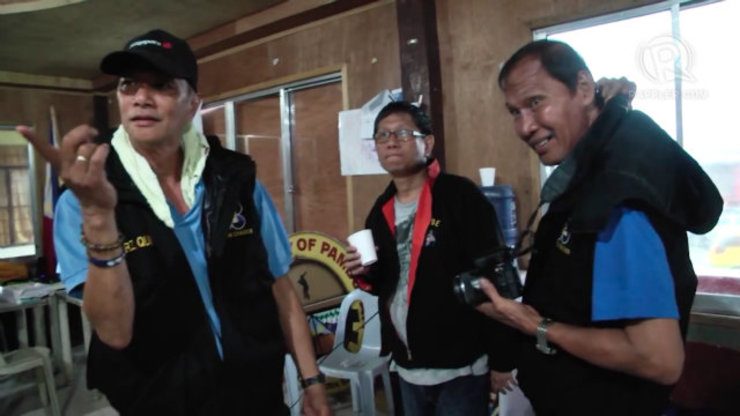SUMMARY
This is AI generated summarization, which may have errors. For context, always refer to the full article.

CATARMAN, Philippines – Meet the PAGASA storm chasers – public servants who fight the instinct to run from danger and instead, chase it.
What does it take to become a storm chaser? How do they help improve weather prediction in the country?
Pia Ranada reports.
Ruby’s first landfall on December 6 sent people scrambling to safety. But a group of scientists did the exact opposite!
The PAGASA storm chasers were two towns away from Ruby’s landfall – Dolores, Eastern Samar, all the better to understand the typhoon.
ROBERT QUINTO, TEAM LEADER, PAGASA STORM CHASERS: If you’re in the forecasting hindi mo alam what is the real happening in the field. Kaya kami nandito is to report the wind speed, the wind direction, what is the actual scenario in the field. Kaya yun yung binabato namin sa kanila. (If you’re in the forecasting division, you don’t know what’s really happening in the field. That’s why we’re here to report the wind speed, wind direction, what is the actual scenario on the field. That’s what we send to them.)
Robert Quinto has been tailing storms since 1995. But this is the first time his team is using an automatic weather station strapped to their van.
It measures wind speed, wind direction, temperature, rainfall amount and more.
ROBERT QUINTO, TEAM LEADER, PAGASA STORM CHASERS: Yung barometric pressure naman, isa yan sa indicator namin habang bumababa siya, it means lumalapit sa station kung saan ka naka-station, lumalapit yung bagyo sa iyo. (Barometric pressure in an indicator. When it lowers, it means the storm is nearing where you are stationed.)
It’s a tough job, and the team is not getting any younger.
ROBERT QUINTO, TEAM LEADER, PAGASA STORM CHASERS: Biruin mo kung kailan tag bagyo kailangan umalis ako. On the family side kasi syempre nag-aalala din sila. Same sa mga kasama ko rin kasi we experienced that during Rosing na nastranded kami for 15 days. (Imagine, every time their is a storm, I have to leave. On the family side, of course they worry. My companions and I experienced getting stranded during Typhoon Rosing for 15 days.)
But Quinto knows his decades of sacrifice is for the greater good. The information they gather is crucial not only to scientists but to the communities that will take the storm’s first hit.
LINO BALANQUIT, MAYOR, PAMBUJAN, NORTHERN SAMAR: Malaking tulong para sa mga tao na magsilikas yung mga tao na nasa gilid ng dagat dahil ah ang ano nila eh DOST na to eh so kaya kailangan na talaga maglipat. (It’s a big help to convince people by the sea to evacuate because they think it’s already from DOST so they really need to move out.)
Pia Ranada, Rappler, Catarman. – Rappler.com
Add a comment
How does this make you feel?
There are no comments yet. Add your comment to start the conversation.